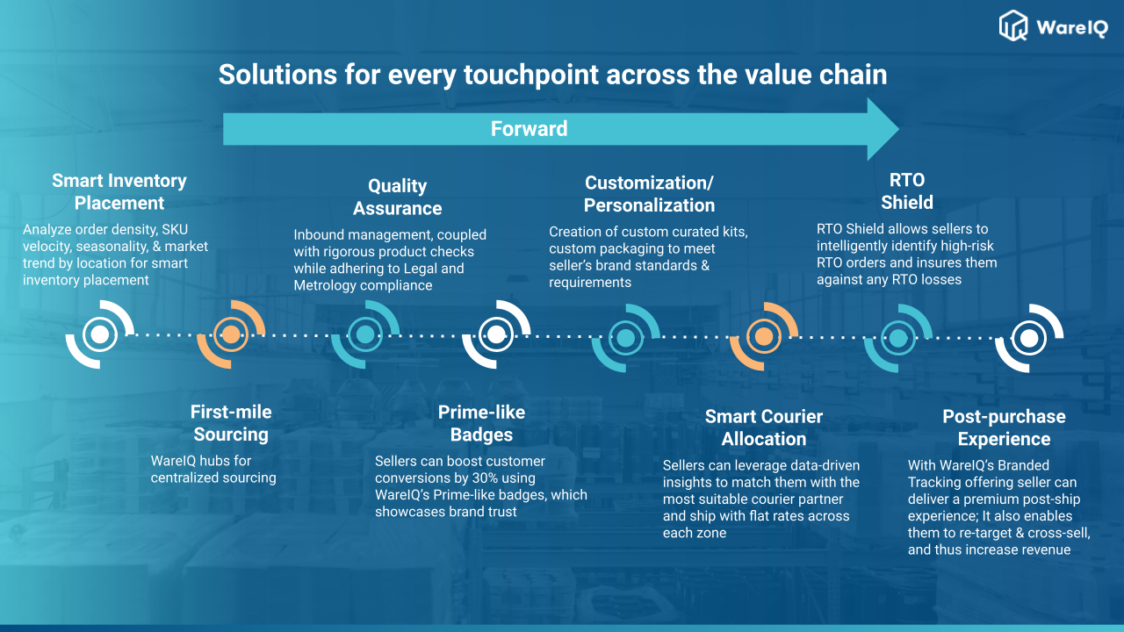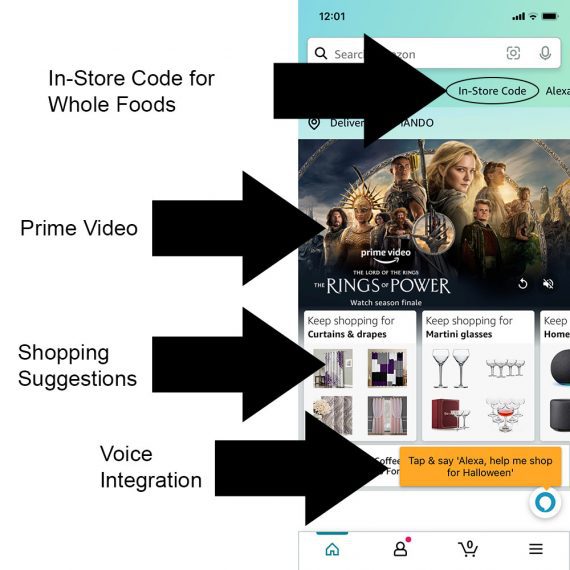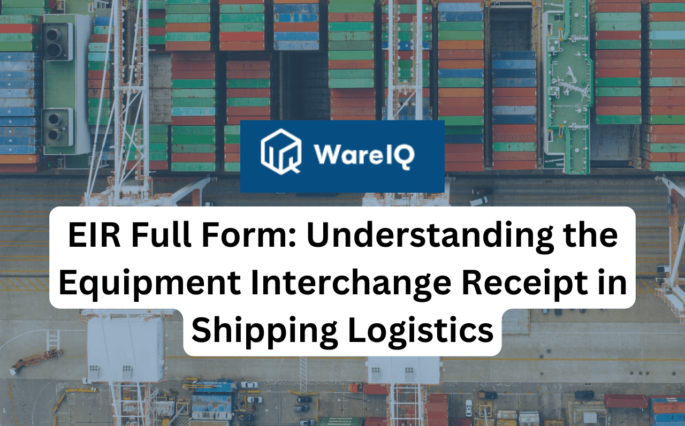Mobile Commerce: A Detailed Guide on Definition, Importance and How to Improve Mobile Shopping Experience in 5 Easy Ways in 2025

Consumers of today are increasingly purchasing goods through their smartphones from online marketplaces. However, there is a noticeable rise in cart abandonment and lost sales if consumers encounter a non-responsive website, slow loading times and a challenging user interface. Fortunately, there are a number of strategies you can use to keep clients interested and improve the mobile shopping experience. You can boost your profitability and create a following of devoted clients by making a few straightforward modifications and optimizing your website.
We’ll talk about the value of mobile shopping in the eCommerce industry or mobile commerce in this blog. We’ll also go through five ways you can improve mobile shopping experience of your customers. Let’s get going.
- What is Mobile Shopping?
- Importance of Mobile Commerce in 2025
- 5 Ways to Improve Mobile Shopping Experience for eCommerce Customers in 2025
- Mobile Shopping Vs Regular Shopping: What’s the Difference?
- Top 3 Benefits of Having a Mobile Shopping Strategy for Mobile Commerce
- How Can WareIQ Assist You as a 3PL Partner to Enhance Mobile Shopping Experience?
- Improve the Mobile Shopping Experience: FAQs
What is Mobile Shopping?
Mobile shopping refers to the usage of smartphones by customers to browse and buy their required products. The emergence of mobile shopping has altered how consumers conduct their online shopping as the world moves toward mobile-mediated transactions and has affected online consumer behavior quite a bit. While eCommerce was previously done mainly through computers and tablets, the emergence of smartphones as the primary means of communication has ensured that websites and applications need to be optimized to improve the mobile shopping experience of customers.
WareIQ, an eCommerce fulfillment company, empowers online brands with a superior-tech platform to compete with Amazon like service levels by bringing their average delivery timelines from 5-10 days to 1-2 days.
Importance of Mobile Commerce in 2025
Mobile shopping is a significant factor in business growth and cannot be disregarded. With so many factors at play, let’s go through a few:
Increase in Mobile Sales
The day when a mobile device was considered to be a luxury item belongs to the past. Mobile usage rates have increased in the current environment due to the fierce rivalry between mobile operators. A smartphone can cost just $100 and above. Users of mobile devices are growing rapidly in number, much more so than the online traffic it generates. Doorstep delivery becomes a very lucrative option for all shoppers which tempts every user to have hands-on with shopping online.
The convenience of Using a Pocket-Friendly Device
Any person can access a mobile device because it is portable and available around the clock. Instead of going through the effort of looking for and then using a laptop or desktop, a mobile device can satisfy any need for shopping at any time. Overall, an increase in mobile sales has a highly noticeable impact on online buying, which is good for the eCommerce industry.
Use of Mobile Shopping by the Younger Audience
The emphasis for young people attending college or living a carefree bachelor’s life while still making a living is making a fashion statement or following a trend. The age range for this sector is often between 18 and 34 years old, and this group is most likely to use mobile internet and engage in mobile shopping. These young people represent a sizable and distinct segment of the eCommerce client base because they have the motivation, means and desire to research, test and purchase the best products.
Larger Screens Improve the Mobile Shopping Experience
Smartphone-related innovations, whether in software or hardware, are always evolving. Additionally, the competition is also increasing. The result is that most smartphones now have large screens and have drastically altered how people use their mobile devices. One of the key trends brought on by larger screens is online purchasing. Large screens are extremely comfortable and even elderly folks are willing to put on their glasses to experience the world of mobile shopping.
Originality Brings Better Business Results
The smartphone industry is one to keep an eye on for innovation and technological advancements. To control the market, each phone provider is organizing its own set of features. The previous strategy of competing with greater technology for any capability has now changed to one of giving something unusual and thinking outside the box. Everyone is competing to offer something novel, which will ultimately improve the mobile shopping experience of customers. These user experiences are now being strategically used by numerous brands as part of their marketing plans.
Optimization of Websites
Retail marketers have developed two distinct strategies for reaching the far-flung masses after absorbing the ups and downs of mobile marketing. One is through using mobile web pages and other mobile applications. eCommerce has advanced thanks to both of these.
Most often, any new business will first develop a mobile web page. Technically speaking, developing and implementing a mobile web page is simple. A single web page can be used by all remote devices so there is no need to create different ones for each platform. It is also simple to roll out, saving time on development work.
Use of Mobile Applications
Nearly all eCommerce merchants use mobile apps, which appear next to online pages. The app’s users are thought to be more devoted, making it comparatively more advantageous. They spend their free time and energy downloading and saving apps. There is a very high likelihood of getting a purchase from these users.
Benefits of Social Media
The eCommerce industry has been particularly quick to profit from the promotion of their business on social media. Instagram, Facebook, and Twitter are just a few examples of the social media platforms that have permeated daily life. Share and like buttons from social media have been incorporated by all mobile app developers into their apps and internet portals. The updates from online websites can be quickly shared on social media. Even one like or share from a consumer can spread like wildfire and quickly reach large numbers of other customers.
5 Ways to Improve Mobile Shopping Experience for eCommerce Customers in 2025
We’ve listed five crucial areas you can modify if you’re searching for ways to enhance your consumers’ purchasing experiences through mobile shopping. Let’s examine each one closely:
Speed Up Your Site
A quick website might entice visitors to browse longer and make a purchase. In fact, Deloitte research found that retail customers spent more money at a retailer even with a 0.1-second boost in site speed. Thankfully, there are a few measures you can do to prevent long loading times. To start, you can use an image compressor like TinyPNG to optimize the photos on your website. This utility minifies the code on your website to enhance the user experience. It also includes other capabilities like the capacity to preload particular requests and Google Fonts optimization to shorten loading times.
Optimize the Design of Your Store
Another crucial element of the mobile purchasing experience is making sure your website works properly on mobile devices. For smaller screens, you must adapt your material. For instance, pages ought to be simple to navigate. They ought to just include the data that is necessary. Visitors will be able to view and buy your products this way without any interruptions or hindrances.
You can also think about using accordion menus to navigate your website. A brief list of items (such as major pages and categories) that can be clicked to access more content is found in an accordion menu (e.g., subcategories). This feature, according to eCommerce platform Nosto, can significantly lower cart abandonment.
Focus on Accessibility
Another important factor to take into account is accessibility. You must make sure that individuals with hearing, vision and cognitive impairments can engage with your material. Including alt text in the product pictures is a simple method to accomplish this. In the event that a picture cannot be loaded, the browser will show this text. Additionally, screen readers employ alt text to describe an image for viewers who are blind.
You can make your site more accessible by using a plugin like WP Accessibility. For example, it can assist you in enforcing alt characteristics throughout your website and addressing design accessibility difficulties. Additionally, it allows you to add skip connections with custom targets. This will make it simpler for site visitors who use a keyboard or screen reader to navigate your website.
Provide Safe and Simple Payment Methods
According to a recent study, 75% of shoppers claimed they would abandon their shopping carts if they lacked confidence in a website’s security. As a result, you might want to provide customers with a selection of well-liked payment solutions, such as online wallets like PayPal and Google Pay. You can also include secure payments on your WordPress site using the WP Simple Pay plugin.
In addition, you should make sure that your checkout procedure is swift and easy. If WooCommerce is installed on your website, it provides you with complete control over your checkout fields. Your checkout page can be exactly how you want it to be. However, we advise that you keep your forms straightforward and restrict user input to the most crucial information. To make the procedure simpler, you can utilize an addon like One Page Checkout.
Suggested Read: How to Sell with Woocommerce?
Add Search Functionality to Your Site
Searchability should be taken into consideration for a pleasant mobile shopping experience. Making sure clients can find the things they’re looking for is necessary. A search icon on every page will allow users to find the content they want easily. Having clever predictive search keywords is also beneficial. Long phrases can be typed more quickly as a result. Spelling errors should also be accommodated since this can assist in removing any roadblocks for customers.
You can utilize Ivory Search, which is a strong tool. This plugin can improve your WordPress search settings. For instance, it makes it possible for visitors to search for WooCommerce goods. Additionally, it offers features like the ability to filter results by relevancy, date, and other factors, as well as the choice to add word synonyms.
Mobile Shopping Vs Regular Shopping: What’s the Difference?
| Pros & Cons | Regular Shopping | Mobile Shopping |
|---|---|---|
| Pros | 1. It is easy to Use 2. The user is aware of how it operates 3. Details the entire client experience 4. Gives the client a thorough summary 5. Is considered to be more safe as customers can see what is happening in front of them 6. Customers have access to in-store employees for any queries or inputs | 1. Makes customer mobility a priority. 2. Offers flexibility in both time and effort 3. Backs up impromptu purchases 4. It is a good option for customers that need products as soon as possible 5. Products can be delivered nearly anywhere, at any time 6. Marketing can be done through social media with direct links to product pages 7. It is adaptable and hence, provides the chance to send targeted marketing campaigns to customera 8. Microtransactions can be done through apps in addition to the payment for the order |
| Cons | 1. Offers no mobility to the client 2. Requires a long time before the customer can complete the transaction 3. Due to the customer's limited flexibility, impulsive purchases are more inhibited than supported. | 1. All shopping needs to be done through a screen which can limit the usability of customers that are not well-versed with technology 2. It fails to give the customer the best overview 3. Consumers still lack confidence in multiple facets of mobile shopping 4. Purchases are hampered by a high perception of privacy and security risk 5. Websites must be optimized for mobile devices in order to be utilized comfortably 6. Many businesses continue to lack mobile websites |
Top 3 Benefits of Having a Mobile Shopping Strategy for Mobile Commerce
COVID-safe
The COVID-19 epidemic has significantly altered consumer purchasing patterns. In a world where more consumers are concerned about safety and cleanliness, mobile shopping is leading the way. About 30% of customers conducted mobile wallet transactions for the first time during the first two months of the pandemic, when stores were forced to close and individuals were forced to turn to the internet.
More drastic changes occurred in some nations than others. By 2020, 88.6% of all card payments in the UK were using contactless technology, an increase of 7% from the previous year. Despite the fact that shops are starting to open and people are returning to work, there is still some uncertainty about how secure in-store buying is. Mobile shopping is a low-risk activity.
Offers Better Customer Experiences
Did you know that 57% of clients won’t give a company a recommendation if their mobile website is poorly designed? Even if they like the retailer and the things it carries, half of them will quit going there altogether. Furthermore, 15% of US adults only use mobile devices, which means that their only internet-connected device is a smartphone. Reaching them with a mobile shopping strategy will almost surely result in a better purchase experience than none at all.
Capture Omnichannel Shoppers
Shopping experiences today aren’t sequential. The range of channels that retailers sell on includes social media, mobile apps, email, browsers, live chats, in-store visits and everything in between. Mobile users are most likely to combine a retail visit with a smartphone search. Nearly 75% of US shoppers use their phones to research a purchase they are going to make in a store. One in four people reports having a change of heart in the middle of the checkout line after researching something on their phone.
Smart practices for merchants integrating physical commerce with pre-purchase mobile touchpoints include catering to multichannel shoppers and taking local searches into account.
How Can WareIQ Assist You as a 3PL Partner to Enhance Mobile Shopping Experience?
In today’s commercial world, mobile shopping is the real deal. Consumers on a daily basis continue to switch to brands that offer them a comfortable purchasing experience. Being receptive to all forms of innovation and client input is essential if you want your internet business to succeed. As a business owner, you must make sure you’re utilizing and improving the trends influencing mobile shopping for the highest level of customer involvement. Apart from improving the mobile shopping experience of customers, if you need help to provide the best delivery experience post-purchase, you can partner with WareIQ.

WareIQ is an eCommerce fulfillment company that provides a vast range of services to enable you to offer the best post-shipping experience to customers by utilizing advanced technology. We provide services such as an app store where apps to enhance different areas of productivity can be downloaded, branded tracking pages to be able to customize tracking pages with whatever information you want, ultra-fast delivery to ensure customers receive their orders on time, a customer feedback app to consolidate reviews that are made on multiple platforms, a WMS that can integrate with more than 12 online marketplaces and much more.








